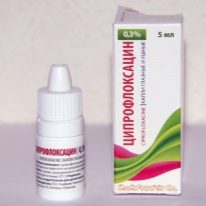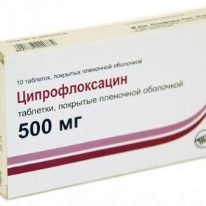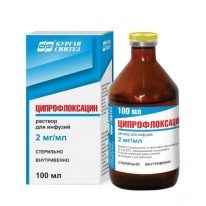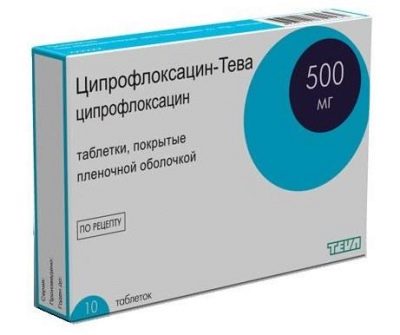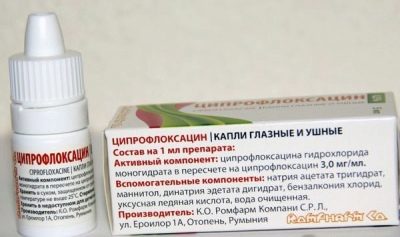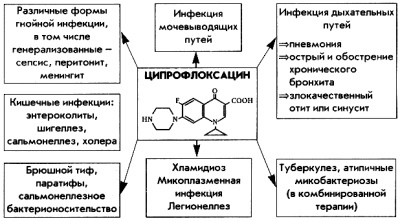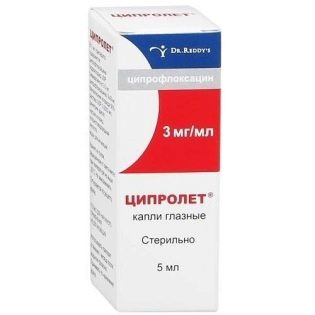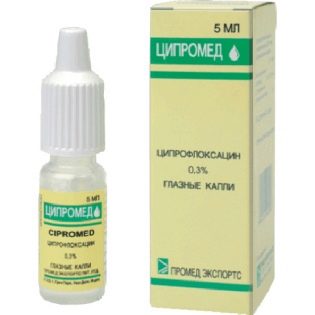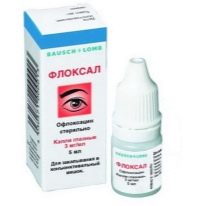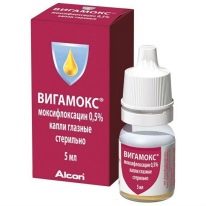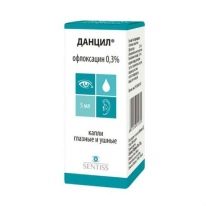Ciprofloxacin for children: instructions for use
Antimicrobial drugs, called fluoroquinolones, are active against a large number of harmful bacteria. One of the drugs of this group is Ciprofloxacin. Adults are often prescribed for cystitis, intestinal infections and eye diseases. If such a drug was prescribed to a child, then before starting treatment you should familiarize yourself with its instructions, contraindications and mechanism of action.
In addition, many parents are interested in the possible harm of such a drug, and drug analogues, if the ability to use "Ciprofloxacin" is missing.
Release form
"Ciprofloxacin" is produced in Russia and abroad in several forms, there are:
- eye and ear drops;
- eye ointment;
- coated tablets;
- solution for pricks.
In the form of a suspension, nasal drops, syrup, capsules or other forms of "Ciprofloxacin" does not happen. Sometimes in the name of the drug there is an additional word, which often refers to the manufacturer, for example, Ciprofloxacin-Teva is a product of the Israeli company Teva Pharmaceutical Industries. But all these drugs contain the same active substance, that is, they are analogues.
“Ciprofloxacin” is not used in children’s pills and injections because the drug that has entered the body can disrupt the process of bone formation and provoke other negative effects. The instructions for such forms of medication in the list of contraindications indicate the age of 18 years.
Children "Ciprofloxacin" is prescribed exclusively in the form of local forms in demand in ophthalmology. According to the instructions, the drug in the form of eye drops is permissible to use from 1 year, and eye ointment is prescribed from 2 years of age.
Ciprofloxacin Drops are represented by a yellowish or yellowish greenish transparent or almost clear liquid. It is sold in glass or polymer bottles and tubes, droppers, inside which there is 1.5 ml, 2 ml, 5 ml or 10 ml of the drug. The ointment is released in tubes containing 3 or 5 g of a white substance, which has a gray, greenish or yellowish tint.
Composition
The main ingredient "Ciprofloxacin" has the same name. It is presented both in ointment and in drops in the form of hydrochloride monohydrate. In terms of pure ciprofloxacin, the dosage of such a substance in one milliliter of eye drops, as in one gram of ointment, is 3 mg, that is, the concentration of both solution and ointment is 0.3%.
Auxiliary ingredients in the drops from different manufacturers are different. Among them you can see glacial acetic acid, mannitol, benzalkonium chloride and other compounds that protect the drug from spoilage and ensure its liquid appearance.
The ointment contains lanolin, petrolatum and nipagin - substances that give this form of "Ciprofloxacin" a certain structure.
Operating principle
Ciprofloxacin has an antimicrobial effect based on the effect on DNA gyrase in bacterial cells. Such enzymes are involved in the formation of DNA and are necessary for the normal division of microbes and their growth, so the use of "Ciprofloxacin" disrupts these processes and causes the death of the pathogen.
The purpose of the drug is justified in inflammation, which is caused by bacteria that are sensitive to it.These include salmonella, morganella, Escherichia coli, Klebsiella, Neisseria, Proteus, Moraxella, Staphylococcus, Campylobacter and many other microbes.
"Ciprofloxacin" acts on some microorganisms that are inside the inflamed cells - mycobacteria, Listeria, chlamydia, legionella, brucella. However, many streptococci, enterococci, clostridia, bacteroids, pseudomonads and some other pathogens are insensitive to or insensitive to such a remedy.
Indications
The reason to appoint "Ciprofloxacin" in the form of an eye ointment or drops is:
- acute conjunctival inflammation;
- barley;
- blepharitis;
- a combination of blepharitis and conjunctivitis;
- keratitis;
- bacterial ulceration of the cornea;
- keratoconjunctivitis;
- dacryocystitis.
The drug can also be used when a foreign body enters the eye, and in case of injury to the external parts of the organ of vision. It is also prescribed for prophylactic purposes to young patients who are going to have surgery in their eyes.
Contraindications
"Ciprofloxacin" can not be used for hypersensitivity to its components. In addition, the drug should not be used in children with fungal or viral infections of the eye, since it does not affect fungi or viral particles. If a child has impaired blood circulation in the brain or convulsive syndrome has been diagnosed, ointment or drops should be used with caution.
Side effects
After instillation or insertion of Ciprofloxacin into the eyes, various local negative effects may occur, for example, slight soreness, reddening of the conjunctiva, burning sensation or itching. In rare cases, drops provoke tearing, swelling of the eyelids, feeling of a foreign object in the eye, the appearance of taste in the mouth, the development of keratitis, nausea and other negative symptoms.
If they occur, the use of the medication should be stopped immediately.
Instructions for use
If the lesion of the eyes is moderate or mild, “Ciprofloxacin” is used in 1 or 2 drops. The medication is dripped either into the affected eye or into both eyes every 4 hours. If the infection is severe, “Ciprofloxacin” needs 2 drops to drop every hour, and when the improvements become noticeable, the frequency of application and the number of drops can be reduced.
The ointment is laid in the aching eye in the form of a small strip of about 1 cm. To do this, the lower eyelid is pulled down a bit and the drug is injected into the conjunctival sac by pressing the tube. Next, the eyelid is released and slightly pressed with a cotton swab for 1-2 minutes, after which they offer the child to keep the eye closed for several more minutes.
In the first two days, this form of "Ciprofloxacin" is used three times a day, and then the agent is used twice for another 5 days. If the infectious process is difficult, the drug is applied every 3–4 hours, and as the inflammation decreases, the frequency of setting up the ointment decreases. The duration of use of this drug should not be more than 14 days.
Overdose
With the local use of "Ciprofloxacin" overdose is unlikely, since the solution or ointment is almost not absorbed and does not enter the general circulation. If a child accidentally takes this medicine by mouth, nausea, headache, diarrhea, or other negative symptoms may occur. In this situation, use the usual measures, which are shown in case of poisoning with any medication.
Terms of sale
To purchase any form of "Ciprofloxacin", as well as for the purchase of antibiotics, you need a prescription from a doctor. The price of the drug is influenced by the packaging and the manufacturer, for example, 5 ml of Ciprofloxacin-AKOS drops cost about 20 rubles.
Storage conditions
It is recommended to keep a bottle with drops or a tube with ointment at home in a dry place at room temperature. The shelf life of the sealed solution is 2 or 3 years, and after opening the bottle, the drops can be used for no longer than 1 month.
Eye ointment also has a shelf life of 2 years from the date of manufacture, and after the first use of such "Ciprofloxacin" is only valid for 5 weeks, and then the medication should be discarded.
Reviews
On the use of "Ciprofloxacin" in the form of drops in the eyes are found mostly positive reviews. In them, the drug is called inexpensive, quite effective and easy to use.
Among the drawbacks of the drug, only a short period of storage after opening is noted, and negative side effects such eye drops, according to parents, provoke very rarely.
Analogs
If you need to replace “Ciprofloxacin” with a drug with the same active ingredient, the doctor will recommend “Tsiprolet" or "Cypromed».
Both drugs are available in the form of eye drops and can be used in children older than a year with different eye diseases in the same doses. Instead, they can also use another fluoroquinolone drug that can be dripped into the eyes, for example, "Floksal, Vigamoks, Zimar or Danzil.
However, they include another active substance, therefore, it is recommended to choose a similar analogue together with a doctor.
If the child showed intolerance to ciprofloxacin, then with eye diseases he can write out:
- «Tobrex» - Tobramycin-based antibacterial drops, which can be used from birth;
- «Vitabact» - containing picloxidin drops, even prescribed to newborns;
- «Okomistin» - a popular antiseptic that can be dripped into the eyes of children over 3 years old;
- "Sofradex" - combined drops allowed for children over 1 year old;
- "Sulfacyl sodium" - A drug from the group of sulfonamides, which is used at any age.
For more information about the drug "Ciprofloxacin", see the following video.

